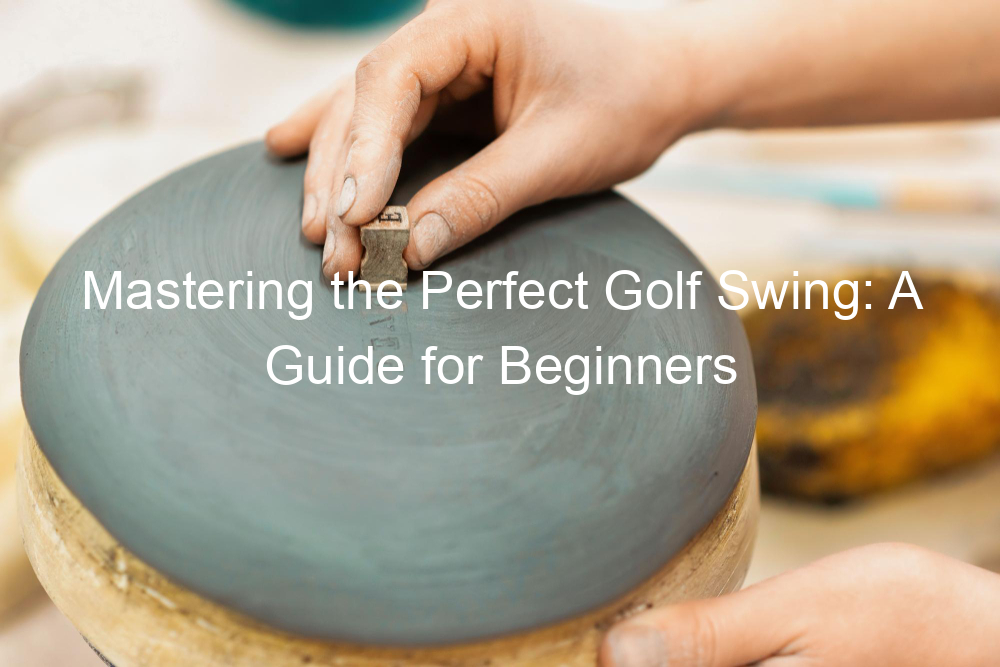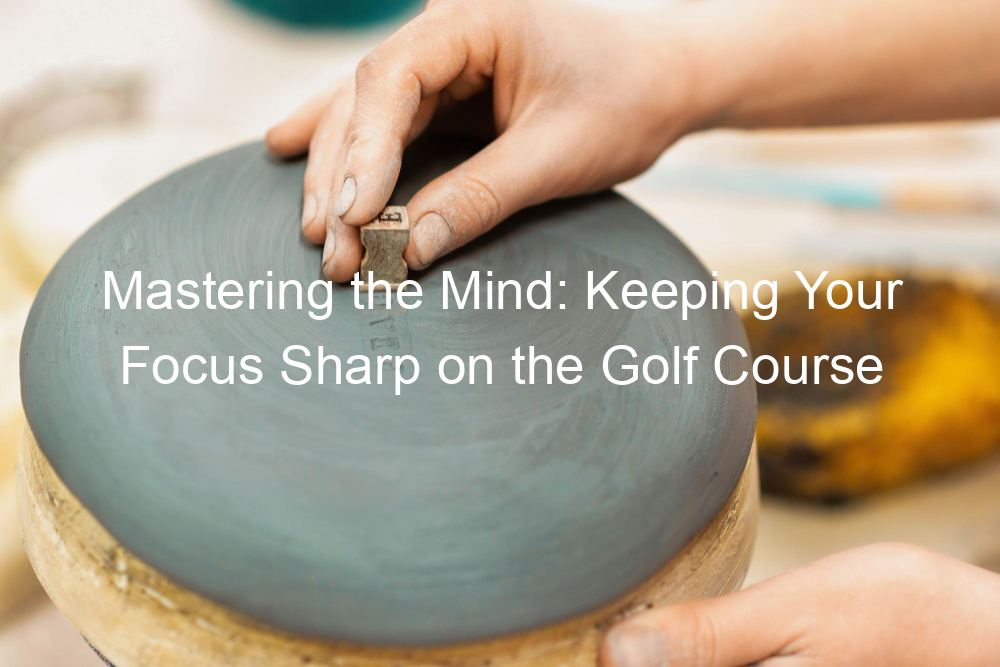Introduction to Golf Swing for Beginners
One of the skills you need to master is the golf swing. This post will guide you through the basics and highlight to your game. Let’s dive in!
- The Basics of Golf Swing
A complex motion that requires coordination, balance, and timing. It’s not just about hitting the ball as hard as you can. Instead, it’s about using the technique to hit the ball accurately and consistently.
Here’s a simple breakdown of a basic golf swing:
- Setup: Stand with your feet shoulder-width apart, knees slightly bent, and the golf ball in line with your left heel.
- Backswing: As you shift your weight to your right foot, rotate your body and bring the club back in a smooth motion.
- Downswing: Shift your weight to your left foot, rotate your body towards the target, and swing the club down and through the ball.
- Follow-through: Continue the swing motion, rotating your body so that you’re facing the target, with the club ending up over your left shoulder.
- The Golf Swing
It determines how far and accurately you can hit the ball. A good swing can mean the difference between a great shot and a poor one.
According to a study by the National Golf Foundation, golfers who can consistently hit the ball straight and far are more likely to enjoy the game and play more often.
So, if you’re serious about improving your golf game, start with mastering the golf swing. It’s a skill that will serve you well on the golf course and make the game more enjoyable.
- Defining the golf swing
It’s about leveraging the natural movements of your body and the design of the golf club to create a smooth, flowing swing. It’s about letting the club do the work, rather than trying to muscle the ball to the hole. The key is to maintain a relaxed grip, a balanced stance, and a smooth, rhythmic swing motion.
- Benefits of the effortless golf swing
It can help reduce the risk of injury as it puts less strain on your body. Secondly, it can lead to more consistent and accurate shots. Lastly, it can make the game more enjoyable as you’re not fighting against your body or the club, but rather working in harmony with them.
A powerful tool that can help improve your golf game. It’s not about strength, but about technique and the mechanics of your body and the golf club. So, next time you’re on the course, try to incorporate these principles into your swing and see the difference it can make.
Here are three key techniques to help you achieve the effortless golf swing.
- Proper Grip
The foundation of a good golf swing. It’s the only point of contact you have with the club, so get it right. A proper grip allows you to control the clubface and hit the ball with accuracy. Here’s how to do it:
-
-
- Place your left hand at the top of the club, with the thumb pointing down the shaft.
- Wrap your right hand around the left, with the thumb and index finger forming a V shape that points towards your right shoulder.
- Make sure your grip is firm but relaxed. A grip that’s too tight can restrict your swing and reduce your power.
-
- Correct Stance
A correct stance provides balance and stability, allowing you to swing the club with power and precision. Here’s how to achieve a correct stance:
-
-
- Stand with your feet shoulder-width apart, with your weight evenly distributed between your feet.
- Bend your knees slightly and lean forward from the hips, keeping your back straight.
- Align your feet, hips, and shoulders parallel to the target line.
-
- Smooth Swing Motion
It allows you to hit the ball with power and accuracy without straining your body. Here’s how to achieve a smooth swing motion:
-
- Start the swing by turning your shoulders and hips, not by lifting your arms.
- Keep your left arm straight as you swing back, and make sure your weight shifts to your right foot.
- On the downswing, shift your weight to your left foot and rotate your body towards the target.
- Finish with your body facing the target and your weight on your left foot.
You can achieve an effortless golf swing that will improve your game and make golf more enjoyable. Keep working on these techniques until they become second nature.
3 Simple Golf Swing Tips
- Keeping your eye on the ball
One of the most common pieces of advice given to golfers is to keep their eye on the ball. This is because it’s easy to get distracted by the surroundings or the pressure of the game. By focusing on the ball, you can ensure that your swing is accurate and powerful. The ball is your target, and your eyes should be locked onto it from the moment you address it until after you’ve hit it.
- Maintaining a steady posture
Another aspect of a good golf swing is maintaining a steady posture. This means keeping your back straight, your knees slightly bent, and your feet shoulder-width apart. Your body should rotate around your spine, like a pivot. This position provides the stability you need to swing the club effectively and hit the ball with precision. Practice this posture regularly to make it a natural part of your swing.
- Practicing a consistent swing rhythm
Finally, a consistent swing rhythm is key to a successful golf swing. The rhythm of your swing should be smooth and controlled, not rushed or jerky. Think of your swing as a pendulum, moving back and forth in a steady, even tempo. This consistency can help you hit the ball more accurately and with greater distance. Try practicing your swing rhythm with a metronome or a rhythm training app to help you maintain a steady beat.
Golf Swing Basics for Ladies
The swing technique can vary between men and women due to differences in physical strength and flexibility. This section will focus on the golf swing basics specifically tailored for ladies.
-
- The difference in swing technique
Typically, men tend to rely on their upper body strength for power in their golf swing. On the other hand, women, who generally have less upper body strength but more flexibility, can generate power from their lower body and core. This difference in technique can lead to a smoother, more rhythmic swing for women.
The case of professional golfer Annika Sorenstam. She was known for her smooth and rhythmic swing, which she achieved by using her lower body and core strength. This technique allowed her to compete successfully against her male counterparts, proving that power in golf isn’t solely about upper body strength.
-
- Practical tips for improving the golf swing
The difference in swing technique, let’s look at some practical tips for improving the golf swing:
-
- Focus on Posture: Starts with the proper posture. Stand with your feet shoulder-width apart, bend your knees slightly, and lean forward from your hips.
- Use Your Lower Body: Use your lower body and core to generate power in your swing. Try to rotate your hips and shoulders together for a smooth swing.
- Practice Regularly: Like any skill, improving your golf swing requires regular practice. Consider using a golf swing trainer or taking lessons from a professional to help improve your technique.
The difference in swing technique and applying practical tips can significantly improve your golf swing. The golf is not just about strength but also about technique and rhythm. So, keep practicing and enjoy the game!
Golf Swing Fundamentals Checklist
Mastering the art of a perfect golf swing involves implementing a few fundamental steps. Here is a simple checklist to help you improve your swing and become a better golfer.
-
- Proper Grip
It’s the only point of contact you have with the club. Hold the club with your fingers, not your palms, and make sure your grip is neither too tight nor too loose. A good grip will give you better control over the club and help you hit the ball more accurately.
-
- Correct Stance
Stand with your feet shoulder-width apart, your knees slightly bent, and your weight evenly distributed between your feet. Your body should be aligned with the target, and your shoulders should be parallel to the target line. This position will give you the balance and stability you need for a powerful swing.
-
- Backswing and Follow-Through
In the backswing, you should rotate your body and lift the club, storing up energy for the downswing. In the follow-through, you should release that energy, striking the ball and continuing the swing until the club is over your shoulder. The swing is a smooth, continuous motion, not a series of jerks or hesitations.
-
- Consistent Swing Rhythm
Try to maintain the same tempo throughout your swing, from the backswing to the follow-through. A good way to practice this is to count to three during your swing: one for the backswing, two for the downswing, and three for the follow-through. With practice, this rhythm will become second nature.
By following this checklist and practicing regularly, you can improve your golf swing and lower your scores. The golf is a game of patience and precision, not power. Focus on the fundamentals, and the rest will follow.
Golf Swing Illustration
A comprehensive golf swing illustration to help you visualize the perfect golf swing. This illustration will guide you through each step of the swing, from the setup to the follow-through.
-
- Visual representation of a perfect golf swing
The perfect golf swing starts with a solid setup. Stand with your feet shoulder-width apart, knees slightly bent, and your back straight. Your left shoulder (for right-handed golfers) should be pointed towards the target. The golf club should be gripped firmly, but not too tightly.
Rotate your shoulders and hips away from the target, while keeping your eyes on the ball. At the top of your backswing, your left shoulder should be under your chin and your body coiled like a spring.
The downswing begins with the hips and lower body, followed by the shoulders, arms, and finally the club. As you make contact with the ball, your body should be square to the target. The follow-through is a natural continuation of the swing motion, with your body uncoiling and facing the target.
-
- Breaking down the golf swing step by step
Let’s break down the golf swing into its main components:
| Step | Description |
|---|---|
| Setup | Stand with your feet shoulder-width apart, knees slightly bent, back straight, and left shoulder pointed towards the target. |
| Backswing | Rotate your shoulders and hips away from the target, keeping your eyes on the ball. Your body should be coiled like a spring. |
| Downswing | Start with the hips and lower body, followed by the shoulders, arms, and finally the club. Your body should be square to the target at impact. |
| Follow-through | A natural continuation of the swing motion, with your body uncoiling and facing the target. |
The perfect golf swing is a smooth, continuous motion. It’s not about swinging as hard as you can, but rather about timing and technique. Practice these steps regularly, and you’ll be well on your way to mastering the perfect golf swing.
Additional Golf Tips for Beginners
There are a few additional tips that can help you improve your golf game. Make a significant difference in your performance.
Equipment Selection
The equipment is crucial for any golfer, especially for beginners, can enhance your performance and make the game more enjoyable. Let’s discuss two key pieces of equipment: golf clubs and golf shoes.
-
- The golf clubs
A set of beginner golf clubs is designed to be more forgiving, helping you to hit the ball more consistently. They are typically lighter and have larger clubheads, making it easier to hit the ball. It’s not about having the most expensive clubs, but the ones that suit your style and skill level.
-
- Importance of comfortable golf shoes
Golf involves a lot of walking, so having comfortable shoes can make a big difference. Look for shoes that offer good support and have soft spikes on the bottom to provide grip on the green. A good pair of golf shoes can also help you maintain a stable stance during your swing, which can improve your performance.
By selecting suitable golf clubs and comfortable golf shoes, you can enhance your performance and enjoy the game more. It can make a significant difference in your golfing experience.
Practice Techniques
The importance of practice and how to make it effective. Let’s delve into these two key areas:
- Importance of Regular Practice
To develop muscle memory, which is vital for executing a good golf swing. It’s not just about the quantity of practice, but also the quality. A study showed that golfers who practice regularly improved their swing speed by up to 20%.
Adjust your swing based on the wind direction, and how to read the green for putting. All these skills are essential for becoming a better golfer.
- Effective Practice Routines
Improve your skills and overcome your weaknesses. Here are a few tips to help you develop an effective practice routine:
- Set clear goals: Before you start practicing, set clear goals for what you want to achieve. This could be improving your swing speed, accuracy, or learning how to use a new golf club.
- Focus on one thing at a time: Instead of trying to improve everything at once, focus on one aspect of your game at a time. This helps you make significant improvements.
- Get professional help: If possible, get a professional golf instructor to guide you. They can provide valuable feedback and help you to improve faster.
- Practice regularly: It’s better to practice for a short time every day than to practice for a long time once a week.
The key to becoming a better golfer is regular and effective practice. So, make sure to incorporate these tips into your practice routine.
Conclusion
As we wrap up our comprehensive guide on golf swing, let’s take a moment to recap the basics and encourage you to continue your practice and learning journey.
-
- Recap of Golf Swing Basics
The importance of maintaining a correct posture, ensuring a smooth takeaway, and executing a well-timed downswing. The power of your swing comes from your body, not your arms. Keep your eye on the ball and follow through completely to maintain balance and direction.
-
- Encouragement for Continuous Practice and Learning
Continuous process that requires patience, practice, and a willingness to learn. Don’t be discouraged if you don’t get it on the first time. Even professional golfers continually work on their swing to improve their game. Every swing you make is a learning opportunity. Keep practicing, stay positive, and you’ll see improvement over time.
The legendary golfer Arnold Palmer, “Golf is deceptively simple and endlessly complicated; it satisfies the soul and frustrates the intellect. It is at the same time rewarding and maddening – and it is without a doubt the greatest game mankind has ever invented.”






